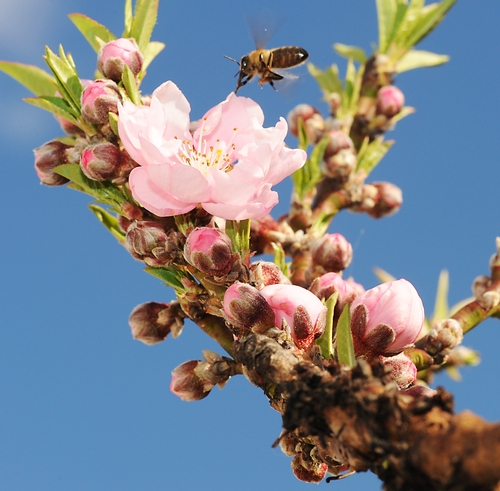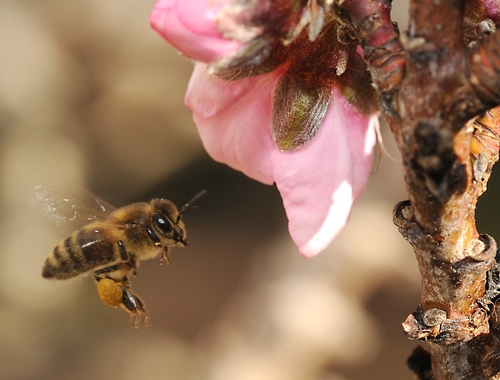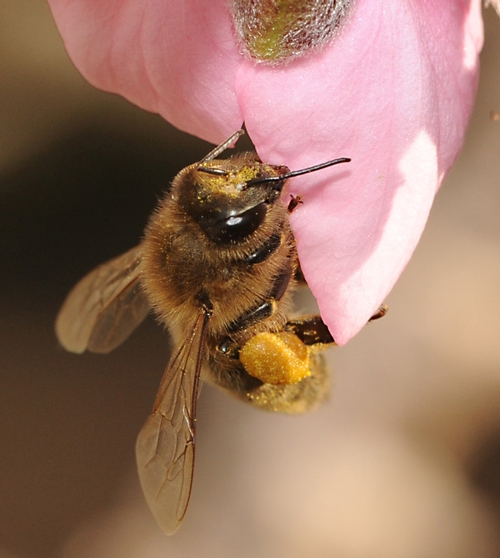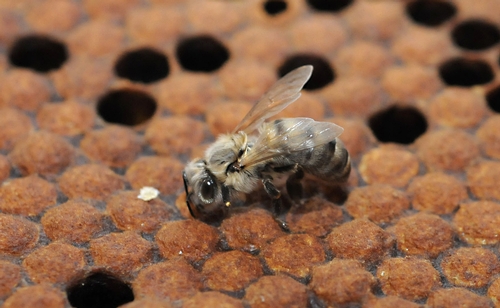From the UC Blogosphere...
Gardening Workshops for 2011
By Yvonne Rasmussen, U. C. Master Gardener
Since 1995, Napa County Master Gardeners have been providing home gardening workshops for the local community. We use University of California resources and other research-based information to develop these workshops, then we get feedback from attendees about topics they would like us to address in the future.
For our 2011 workshops, we will be focusing on how to create a healthy, sustainable garden. Some of our workshops will be aimed at novices; others will include detailed information for the more experienced gardener.
New topics this year include seed starting, seed saving and selecting seeds for unusual vegetables. For avid gardeners, we will have workshops on how to identify and manage insects and how to improve soil through mulching and amending.
We will be repeating some of our most popular classes, with a focus on smaller gardens. Our tree-pruning workshop on Saturday, February 12, will cover some special techniques to keep trees small such as summer pruning and espalier. On Saturday morning, April 16, we will do a session on gardening in containers and raised beds and repeat the session for Spanish speakers in the afternoon.
On Saturday, September 24, we will do a class on planting bulbs for spring bloom.
For the year-round vegetable gardener, we have planned a year’s worth of seminars, beginning with a session on seed starting on Saturday, January 29. On Saturday, February 26, our workshop will focus on unusual vegetables to try in the garden. Thursday, March 10, is our “Vegetables 101: From Seed to Garden” workshop. Our tomato-growing workshop on Saturday, March 10, will repeat the following Saturday.
On Saturday, July 16, to get you ready for fall planting, we will have a class on growing cool-season vegetables. That session will be repeated the following Saturday. On Saturday, August 13, and again the following Saturday, you can learn how to harvest and save your seeds for the next year’s garden. Finally, on Saturday, November 5, our workshop on intensive year-round gardening will show you how you can harvest edibles from your garden throughout the year.
To help you create a more sustainable garden, we will offer a class on minimizing water use on Saturday, June 18. The workshop on Saturday, October 15, will teach you how to mulch and amend your soil. We will also be conducting compost workshops again this year with the City and County of Napa, starting on Saturday, March 5, and continuing through October.
These workshops demonstrate the basics of the hot compost method and other ways to convert your garden waste to a valuable soil amendment. The program includes a short segment on worm composting, but for more information, including all the details you need to do it at home, we will also conduct two workshops specifically on worm composting.
Space is limited at these workshops so we recommend that you preregister. For information about times, locations, maps and registration, visit our website at http://cenapa.ucdavis.edu or call the Master Gardener Help Desk (see below). To register for workshops that the Master Gardeners are co-sponsoring with the City of Napa or the Town of Yountville, look for the appropriate links on our website.
Dormant Sprays
By Yvonne Rasmussen, U. C. Master Gardener
What are dormant sprays and what are they used for? In Napa Valley, most deciduous fruit trees benefit from these protective treatments, applied in winter after leaves have fallen and before new growth has fully emerged.
Dormant sprays help control many insects and fungal diseases. Applied in winter, when some insects are in their most vulnerable stage (crawlers or eggs) and many fungi are at their most active, these sprays can be highly effective. Spraying trees when they are bare helps you get good coverage of branches and insects, key to good control. Sprays can damage tender young growth, another reason to apply them when trees are dormant.
Some dormant-season sprays are fungicides. Others are horticultural oils derived from highly refined petroleum. When applied in the dormant season or early spring, before bud break, horticultural oils help control scale, spider mites and leaf-chewing caterpillar eggs. They can also help eliminate sucking insects such as plant bugs and aphids when they are immature and present in high numbers. Later in the summer, you can use these oils to control spider mite eggs and adults on leaves.
Most experts agree that horticultural oils kill insects by smothering them. The fine droplets coat tender-bodied insect and egg surfaces, preventing oxygen uptake. The spray must fully coat branches, including those little nooks and crannies where small insects and eggs can hide. If you don’t get good coverage, or if the insects or eggs are in a protected stage of growth, such as a hard-shell stage or cocoon, you will not get good control. Note that oil residue will not harm beneficial insects that may fly into the area after you spray.
Look for horticultural oils at nurseries and garden centers, where they are often labeled as “superior oil” or “summer spray oil.” They generally flow easily and have low sulfur content so you can use them on growing plants in winter or summer, but not on tender new growth.
Fungicides protect fruit trees by inhibiting fungus growth that might infect branches. These products are generally composed of copper or sulfur or some combination of the two. Again, good coverage and timing are critical. You need to apply fungicides before fungi are actively growing. And if it rains, you must reapply them to keep plants protected. As a result, you may need to treat your trees several times in early spring to protect new growth. Once the fungus is actively growing, it is too late for effective control or treatment.
Our wet weather and mild temperatures encourage fungi growth. Many of our fruit trees (such as pear, apple, peach, prune and apricot) are especially susceptible. If properly applied, copper and sulfur sprays can help protect trees from such problems as leaf curl, scab, powdery mildew, anthracnose, cankers and bacterial blights. To be most effective, fungicides should be applied in the fall, around November, and again in the spring before buds swell, usually early February. In a dry year, you can forego the February treatment. In wet years, you may need a third spray near bloom time.
Good tree care throughout the year is also important in keeping fungal problems at bay. Thinning the canopy in midsummer will improve air flow. Removing diseased wood and plant parts during winter pruning will also help control disease.
Keep pruners clean and sharp. When using any chemical or pesticide, follow label directions exactly, including instructions for clean-up and disposal. Read the label before you start.
For more information on dormant spraying and other fruit-tree topics, consult the Master Gardeners’ Healthy Garden Tips (http://ucanr.org/sites/ucmgnapa/Gardening_Books/Healthy_Garden_Tips/) and Pest Notes (: http://www.ipm.ucdavis.edu/PDF/PESTNOTES/index.html). For more information about home fruit trees, consult the University of California’s backyard-orchard web site (http://homeorchard.ucdavis.edu/).
March Gardening Chores
March Garden Chores By Maggie King, Master Gardener Photo by Jennifer Stevens. A blanket of Baby Blue Eyes covers a...
Nectarines Bursting Into Bloom
It's Presidents' Day and far too early for nectarines to burst into bloom.The unseasonable weather, however, fooled...

Nectarine Blossoms

Caught in Flight

Lots of Pollen
A Weighty Matter in the Hive
Think what it would be like if you increased your weight by 1000 times in six days. But that's exactly what worker bee...

Honey Bee Cells

Queen Bee

Newly Emerged Bee







